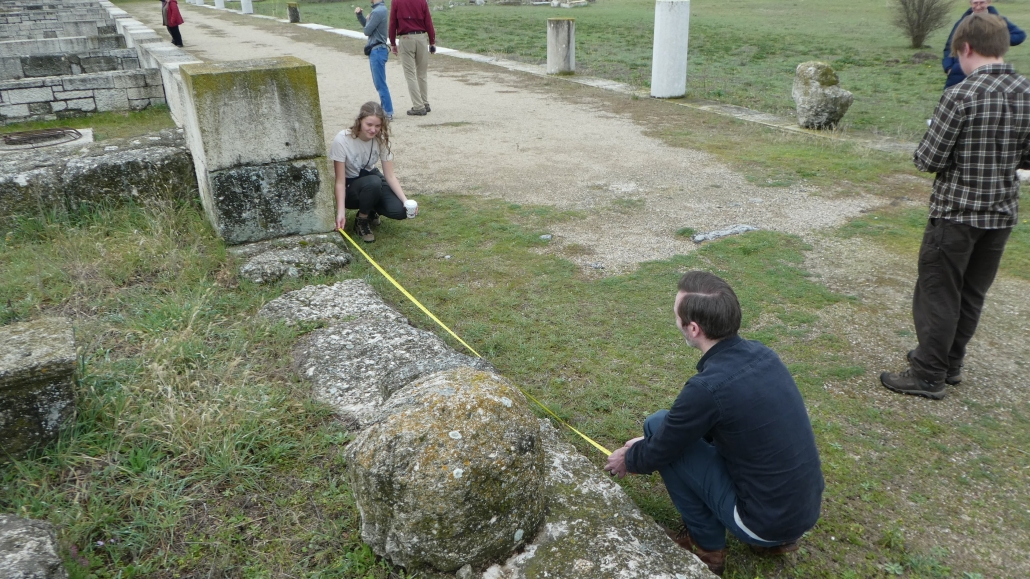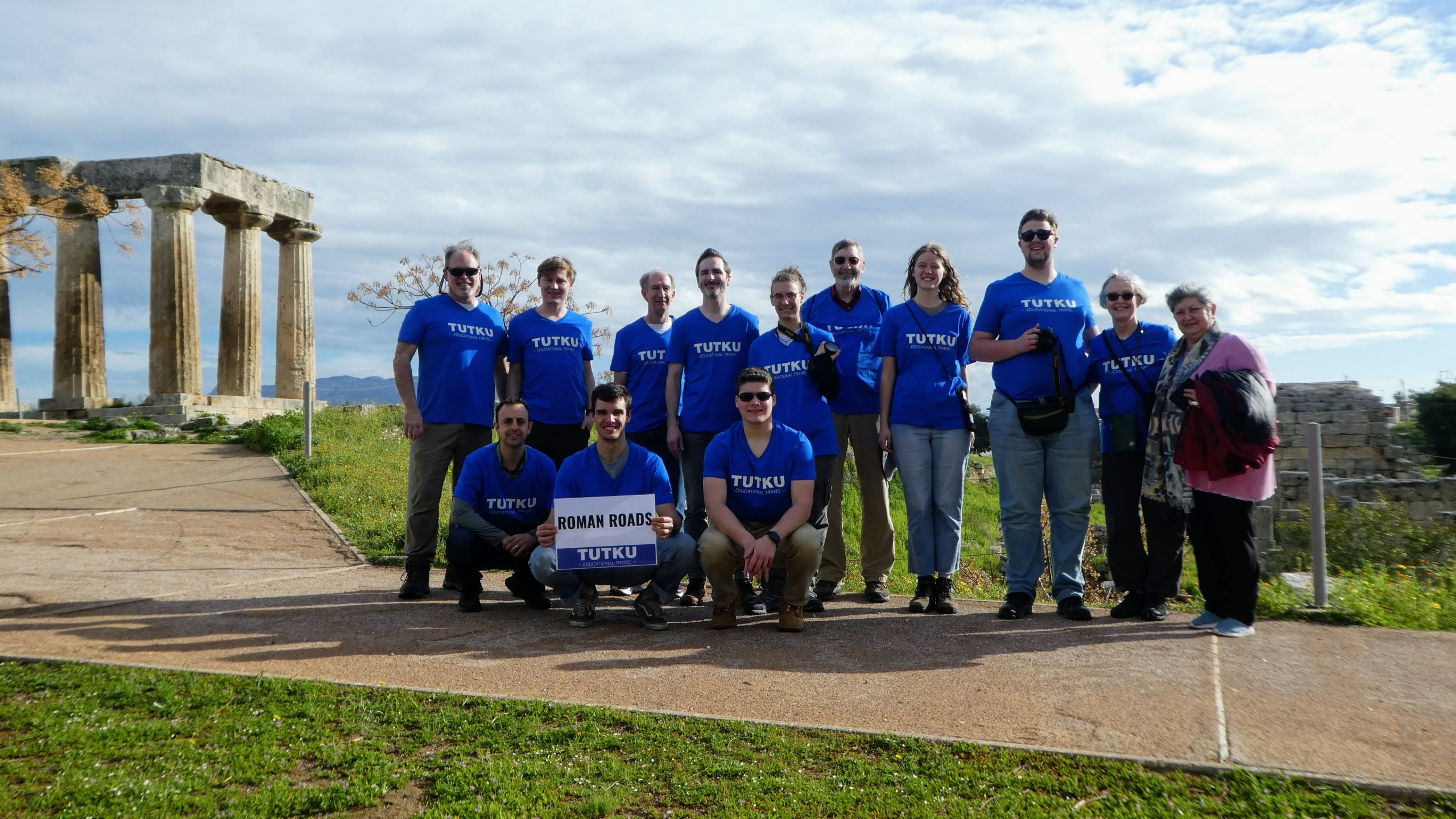By Dr. Keith Wessel NWC ’87, WLS ’91
 Over spring break 2023, six MLC students and two MLC professors had the unique opportunity to do field research in Greece as participants in the Roman Roads Project. The project, originally known as The Anatolian Roads Project (TARP), was begun nearly 15 years ago by a pair of good friends, Dr. Glen Thompson of Wisconsin Lutheran College and Dr. Mark Wilson, founder and director of the Asia Minor Research Center in Antalya, Turkey (ancient Attalia), where he resides.
Over spring break 2023, six MLC students and two MLC professors had the unique opportunity to do field research in Greece as participants in the Roman Roads Project. The project, originally known as The Anatolian Roads Project (TARP), was begun nearly 15 years ago by a pair of good friends, Dr. Glen Thompson of Wisconsin Lutheran College and Dr. Mark Wilson, founder and director of the Asia Minor Research Center in Antalya, Turkey (ancient Attalia), where he resides.
The MLC participants were Zach Neumann (New Life-Kenosha WI; preseminary), Josh Aden (St. John/St. James-Reedsville WI; elementary ed and secondary social studies ed major), Lydia Hahm (Holy Trinity-New Hope MN; secondary chemistry and physics ed major), Liza Bornschlegl (Resurrection and Life-Rochester MN; secondary English ed major), Josh Zander (Immanuel-Manitowoc WI; secondary social studies ed major), and Luke Wegner (St. Marcus-Milwaukee; preseminary).
MLC students previously have been invited on these research tours, though only one (Paul Spaude, MLC ’13, WLS ’17) has participated. However, a generous donation from Jerry and Kay Fischer of the Fischer Family Foundation, longtime supporters of the project, made it possible for more students to go at a reduced rate.
The students were accompanied on the trip by Professor Luke Thompson MLC ’09, WLS ’13 and Dr. Keith Wessel NWC ’87, WLS ’91, along with Dr. Glen Thompson NWC ’72, WLS ’77, Mrs. Beth Thompson, Dr. Mark Wilson, Don Chew, Jason Borges (research assistant), and Maria Papadopoulos (tour guide).
This was the fifth trip of the Roman Roads Project but the very first one that explored Roman roads in Greece. The stated goal of the trip was to trace the route of Paul through Greece on his second missionary trip and try to ascertain the exact pathways Paul may have taken.
 Our trip began near ancient Philippi, where our group walked, studied, and measured various sections of the ancient Via Egnatia, the main Roman road that traversed Greece in the north. Students learned field research firsthand as they used laser distance measuring tools and handheld GPS locators to mark various places on the roads. They learned that sometimes the routes of Roman roads could be plausibly reconstructed from the presence of cemeteries (necropoli) and burial monuments, since Romans often placed their final memorials in prominent places that many would see.
Our trip began near ancient Philippi, where our group walked, studied, and measured various sections of the ancient Via Egnatia, the main Roman road that traversed Greece in the north. Students learned field research firsthand as they used laser distance measuring tools and handheld GPS locators to mark various places on the roads. They learned that sometimes the routes of Roman roads could be plausibly reconstructed from the presence of cemeteries (necropoli) and burial monuments, since Romans often placed their final memorials in prominent places that many would see.
Students were also required to keep detailed journals of observations that became part of the research record of the Roman Roads Project.
But the project wasn’t all work. The group also visited sites famous to Greece from both the Bible and ancient historical records: Philippi, Thessalonika, Thermopylae, Pella, Dion, Athens, Delphi, Corinth. It was especially meaningful for the group to worship one Sunday in Philippi, near the river where Paul met Lydia, and the next Sunday in the forum of Corinth.
“The most meaningful thing about going to Greece,” said Liza Bornschlegl, “was how real it made biblical accounts for me. It’s one thing to read the accounts of the New Testament and the early Christian church, but it’s totally different to actually walk where Paul walked and to stand in the ruins of the cities where he preached.”
Zach Neumann had a similar impression: “Seeing these historical sites and rereading the accounts in the very places where Paul may have stood thousands of years earlier put into perspective the immensity of the task that he and his companions undertook in bringing the gospel to the ends of the earth.”
That also impressed Lydia Hahm, but for her it was the opportunity to do hands-on research that was most memorable: “Being able to walk in the steps of the apostle Paul was an amazing opportunity in and of itself, but what I think I will really remember is seeing Dr. Thompson and Dr. Wilson work. The way that they would explain the route we were looking at, or debate the inscriptions in museums, gave me a view into what archeological research looks like.”







